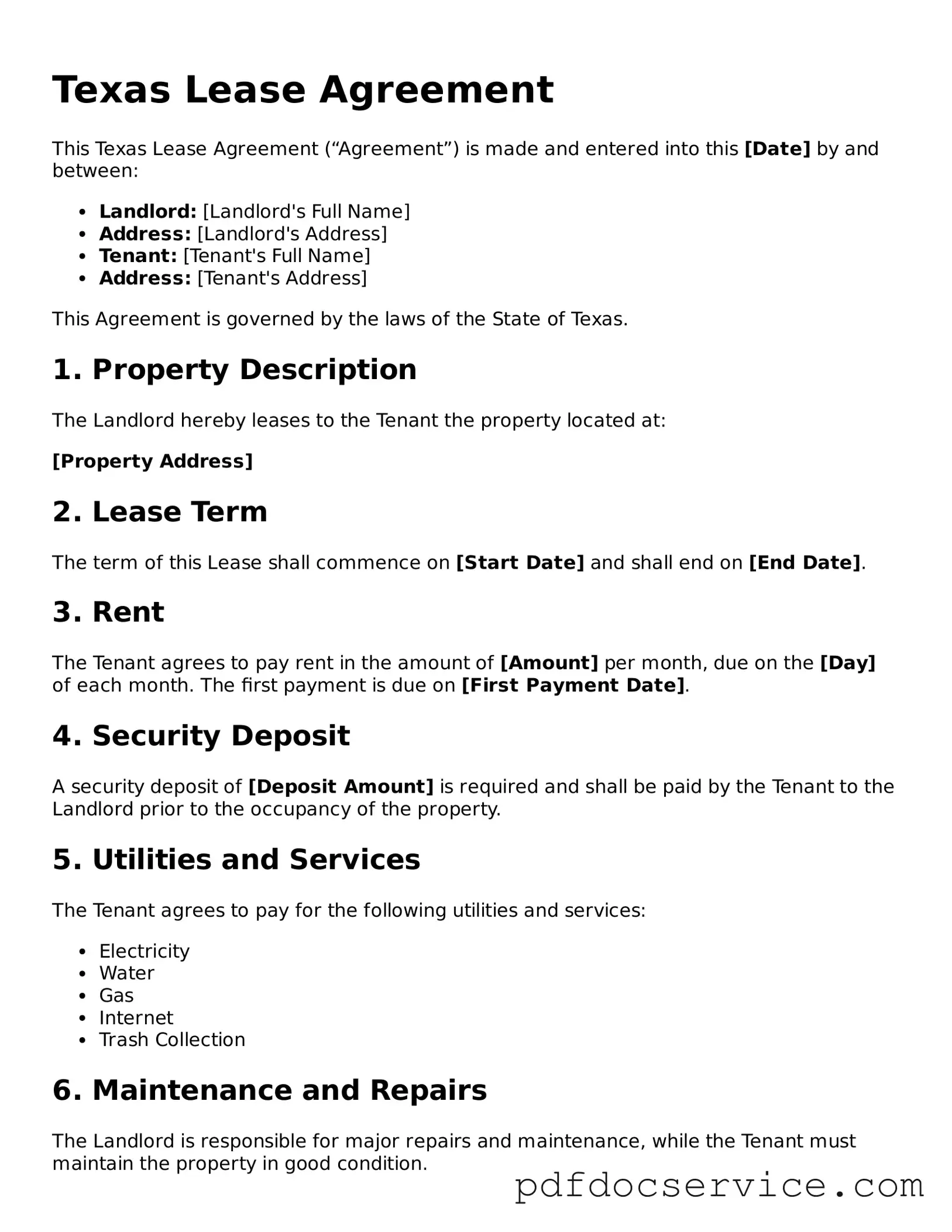Printable Lease Agreement Template for Texas
A Texas Lease Agreement form is a legal document that outlines the terms and conditions between a landlord and a tenant for renting residential or commercial property in Texas. This form serves to protect the rights of both parties while ensuring a clear understanding of responsibilities. Properly completing this agreement is essential for a smooth rental experience.
Open Lease Agreement Editor
